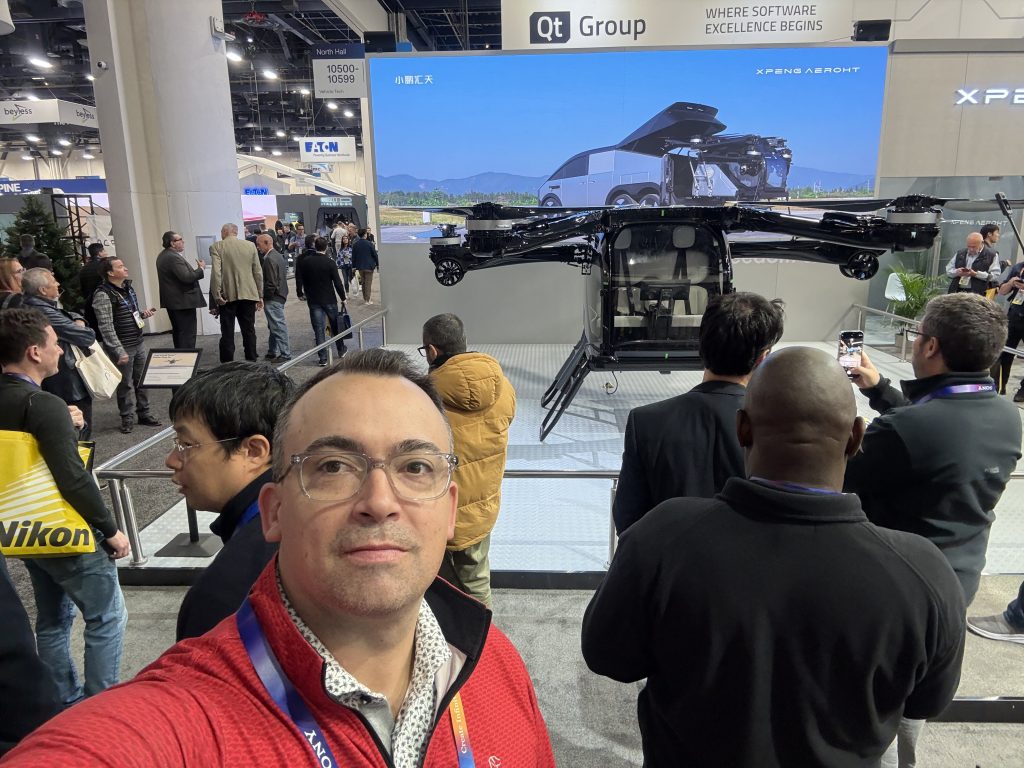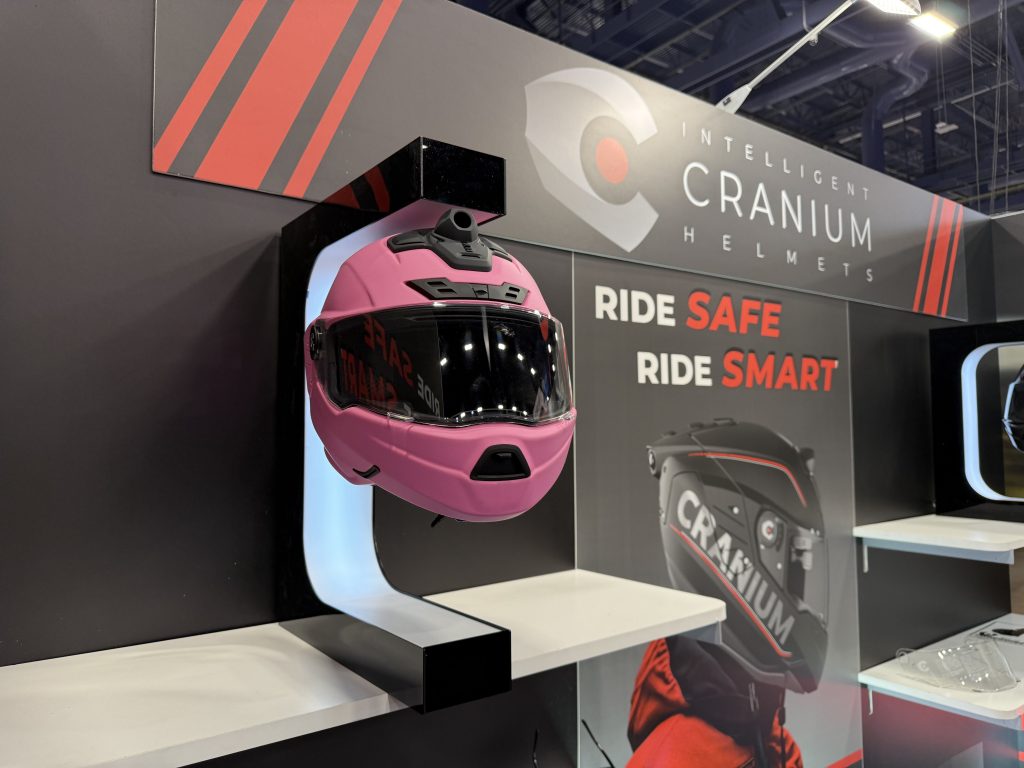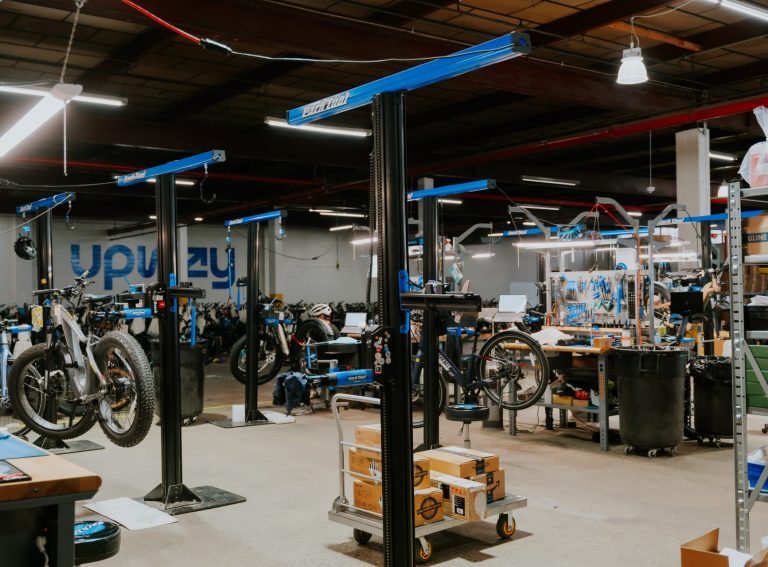Author: Brandon Schuh, Senior Vice President at U.S. Insurance Broker Christensen Group
The 2025 Consumer Electronics Show (CES) wrapped up last week in Las Vegas, NV, brought innovation, excitement and a few surprises to the world of tech.
While the atmosphere outside the showgrounds may have appeared calm, CES itself was bustling with energy, matching pre-pandemic levels of enthusiasm.
Despite some disappointment in the abundance of mundane gadgets like robotic pool cleaners and lawn mowers, two sectors stood out to me for their innovation: micromobility and aviation.
CES’s grouping of these sectors into a dedicated “Future of Mobility” category says it all, and offers a comprehensive look at the cutting-edge advancements in personal transportation. Here are some highlights from the show:
Xpeng’s Land Aircraft Carrier
One of the most talked-about exhibits was Xpeng’s Land Aircraft Carrier, a six-wheeled SUV that houses an eVTOL (Electric Vertical Take-Off and Landing) Air Module. The concept drew significant attention, blending terrestrial and aerial mobility into a single package.
While it’s undeniably cool and futuristic, skepticism remained high about its practical viability.
The vehicle, priced at approximately $300,000, has reportedly garnered 3,000 pre-orders. However, the hefty insurance implications are evident. From a product liability and OEM standpoint, insuring this vehicle will be akin to handling small engine aviation risks, complicated further by its dual-purpose nature. Consumers will face high insurance premiums as the risks of personal flight combined with EV technology—including potential thermal events—create a challenging landscape for underwriting.

Additionally, the vehicle’s dual functionality—combining a land vehicle and an air module—adds complexities in terms of regulatory compliance and operational safety standards. While Xpeng’s innovation is impressive, broad consumer adoption will depend on the vehicle’s ability to demonstrate consistent reliability and safety.
Livaq’s EQUAD: A quieter, sustainable all-terrain vehicle (ATV)
Another standout was Livaq, an electric ATV manufacturer featured in the Michigan Mobility Pavilion. Its flagship product, the EQUAD, is a robust machine combining impressive suspension – over nine inches of travel and 13 inches of ground clearance, with a low center of gravity for enhanced stability.
As a quieter alternative to traditional ATVs, the EQUAD addresses noise pollution concerns while maintaining high performance, with speeds reaching up to 70 mph. Its innovative use of 4D-printed carbon fiber panels and comfortable, durable seating reflects Livaq’s commitment to sustainability and advanced manufacturing. The EQUAD’s sleek design and cutting-edge technology make it a promising option for eco-conscious consumers seeking off-road adventures.
From an insurance perspective, the EQUAD’s low center of gravity and quiet operation could result in a favorable risk profile as the company scales. Its focus on safety and design innovation sets a positive precedent for the market.
Moreover, its environmentally friendly features align with emerging trends in sustainable micromobility solutions. The ATV space has historically been really challenging with a plethora of rollover risks. Here, we are nipping that risk in the bud early and creating an inventory of data with the app-based features to ensure a smart ride inside and out.
Intelligent Cranium Helmets (ICH): The iC-R Smart Motorcycle Helmet
Intelligent Cranium Helmets (ICH) wowed attendees with their iC-R Smart Motorcycle Helmet, a cutting-edge product designed to enhance rider safety and connectivity. Key features include:
- 360-Degree Visual Awareness: Dual rear cameras providing a 240-degree field of view to eliminate blind spots.
- Crash Detection: An automatic emergency alert system that contacts authorities if the rider is immobile for 15 seconds.
- Heads-Up Display (HUD): Real-time information, such as speed and navigation, within the rider’s line of sight.
- Proximity Sensors: Alerts for obstacles and lane departures.
- Voice-Activated Recording: Riders can document their journeys with hands-free functionality.

Priced at around $1,200, the iC-R helmet integrates EV-like technology into a personal safety device. Unlike traditional helmets associated with high-impact sports injuries, this product’s advanced safety features may improve insurability. Its potential as a “black box” for incident reconstruction adds forensic value, benefiting both consumers and manufacturers in claims scenarios.
ICH’s approach to combining safety with advanced connectivity technologies positions it as a game-changer in the powersports space. As the product gains traction, its impact on rider safety and insurance trends could be significant, particularly in regions with high motorcycle usage.
Other Notable Innovations
Though not every player can be covered in one column, another company that caught my eye for its breakthrough technologies was VMAX. The Swiss e-scooter brand introduced a range of electric scooters, including a side-by-side stance model and a lightweight carbon fiber design. The enhanced suspension systems in their new models emphasize comfort and durability, making them suitable for urban and recreational use.
Another was InMotion which showcased new electric unicycles and scooters with advanced controller technology for smoother, more comfortable rides. These vehicles are designed for agility and convenience, catering to commuters seeking compact, efficient transportation solutions.
The insurance angle
The insurance market for micromobility and aviation remains challenging, but CES 2025 highlighted promising trends.
Enhanced safety features and technological advancements—such as proximity sensors, crash detection, and sustainable designs—are steps in the right direction. These innovations could gradually improve the risk environment for manufacturers and operators, paving the way for more accessible coverage.
However, challenges persist. For products like the Land Aircraft Carrier, the combination of EV technology with personal flight creates new underwriting complexities. Similarly, products like the iC-R helmet must continue to prove their reliability and safety performance to gain broader acceptance among insurers and limit concerns around progressive injury risks.
Overall, CES 2025 reaffirmed the micromobility sector’s commitment to integrating AI and advanced software into hardware products. While challenges persist, the entrepreneurial spirit and focus on safety shown at this year’s event leave room for optimism in both mobility innovation and its insurability.
As these technologies evolve, the interplay between innovation and risk management will shape the future of mobility, ensuring that these groundbreaking products can be safely and widely adopted.











